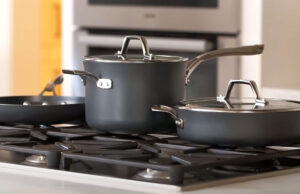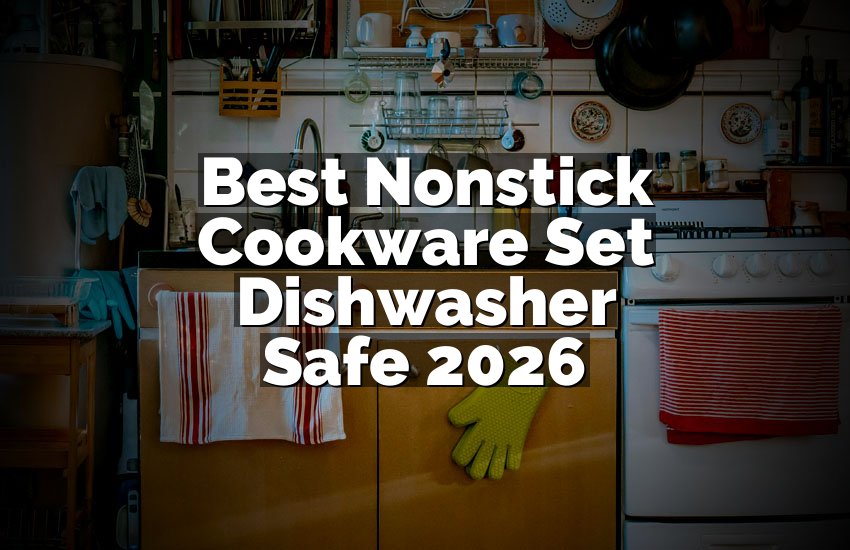As an Amazon Associate, I earn from qualifying purchases at no extra cost to you.
How to Fix LG Dishwasher Not Filling with Water
It’s really frustrating when your LG dishwasher suddenly stops filling with water. Many people face this problem, and it often happens at the worst time. When your dishes are piling up, you just want a quick and easy fix that works perfectly.
Start by checking the water supply, inlet valve, and float switch. Sometimes, a simple reset can solve everything. Also, make sure there’s no blockage in the filter or hose.
Cleaning and testing each part carefully can save you from calling a repair service. By following easy steps and keeping your dishwasher clean, you can get it working again quickly and prevent future problems too.
Steps to LG Dishwasher is Not Filling with Water
Check the Water Supply Connection
The first thing to look at is your dishwasher’s water supply. If the LG dishwasher isn’t getting enough water, it may not start filling at all. Make sure the water valve under the sink is fully open. Sometimes, it can accidentally get turned off.
If the valve is open, check the water hose that connects to the dishwasher. It can get twisted or clogged with minerals. A quick inspection and cleaning can often fix it. When the hose is clear, water can flow freely into your machine again.
Next, make sure the water pressure in your home is strong enough. Low pressure might cause the dishwasher to fail during the fill cycle. Try running your kitchen tap—if the flow seems weak, that could be a sign.
After doing these checks, you’ll know if the problem is outside or inside your dishwasher. Once water supply issues are ruled out, move on to the next part inside the machine.
- Check if the water valve is open.
- Inspect the inlet hose for bends or clogs.
- Test your home water pressure.
- Make sure water is flowing to the dishwasher.
Inspect the Water Inlet Valve
The water inlet valve controls how much water enters your LG dishwasher. If it’s faulty, your dishwasher won’t fill properly. You can find this valve at the bottom of your dishwasher, behind the front access panel.
Before checking it, always unplug your machine and shut off the water. Then, remove the panel and look for signs of damage or rust. If it looks dirty, gently clean it using a soft brush. Sometimes, a bit of buildup can block water flow.
You can also test it with a multimeter. If it shows no continuity, it means the valve needs replacement. Replacing it isn’t too hard, but if you’re unsure, call a technician. It’s always safer when you’re dealing with electrical parts.
A new inlet valve can instantly fix water-filling problems. Once replaced, turn everything back on and run a test cycle. You’ll know quickly if the issue is solved.
- Always unplug your dishwasher before repair.
- Clean the valve carefully.
- Replace if damaged or not working.
- Test after reassembling.
Examine the Float Switch
Inside every LG dishwasher, there’s a small part called a float switch. It controls how much water fills the tub. When the float gets stuck in the “up” position, it signals the machine to stop filling—even if it’s empty.
Open your dishwasher and look for a small dome-shaped cap on the bottom. Lift it gently up and down. If it feels stuck or gritty, clean around it with warm soapy water. Often, food particles or detergent buildup cause it to jam.
If cleaning doesn’t help, the switch itself might be faulty. You can test it with a multimeter just like the valve. If it’s broken, replacing it is usually cheap and easy.
Keeping this float free and clean helps your dishwasher run smoothly. It’s one of the simplest but most important checks you can do.
- Locate and test the float switch.
- Clean around the float area.
- Replace if it doesn’t move freely.
- Keep it clean to avoid future problems.
Clean the Filter and Spray Arms
A clogged filter or spray arm can also cause filling issues. When water can’t circulate properly, your LG dishwasher may stop the fill cycle automatically.
Remove the bottom rack and take out the filter. Rinse it under warm water and use a toothbrush to scrub off grease and food. Then, check the spray arms—poke out any debris from their holes using a toothpick.
Regular cleaning helps maintain water pressure and stops residue buildup. You’ll also notice your dishes coming out cleaner after every wash.
A clean filter system not only prevents water issues but also extends the life of your dishwasher.
- Remove and wash the filter weekly.
- Clean spray arm holes carefully.
- Avoid using harsh chemicals.
- Keep all parts free of food debris.
Reset the Dishwasher
Sometimes, the problem isn’t mechanical—it’s electronic. Resetting your LG dishwasher can fix small system glitches that stop water from filling.
Unplug your dishwasher for a few minutes. Then, plug it back in and press the Start or Cancel button for five seconds. Wait a minute and then start a wash cycle.
If your dishwasher begins to fill normally, the issue was just a temporary glitch. If it still doesn’t work, there might be a deeper electrical fault.
Resetting can often save you a service call and solve random malfunctions easily.
- Try a reset before calling for help.
- Wait a few minutes after unplugging.
- Run a test cycle afterward.
- Check for error codes if problems remain.
Test the Door Latch and Sensors
If your LG dishwasher door isn’t closing tightly, the machine won’t fill with water. The latch ensures that everything is safely locked before water starts flowing.
Inspect the latch for dirt or damage. Clean it using a damp cloth, and make sure it clicks properly when you close the door. Also, check the door sensor—it may not detect a closed position if it’s misaligned.
When the latch and sensor work correctly, your dishwasher will begin the cycle smoothly. It’s an easy fix that can stop bigger issues later.
- Make sure the door closes fully.
- Clean the latch and check alignment.
- Test by closing firmly.
- Replace if the latch feels loose or broken.
| Part | Possible Issue | What to Check | Easy Fix |
|---|---|---|---|
| Water Supply | Valve closed or hose kinked | Turn on valve, straighten hose | Open valve fully |
| Inlet Valve | Blocked or broken | Check continuity | Replace if faulty |
| Float Switch | Stuck in up position | Clean and test movement | Free or replace |
| Filter | Clogged with debris | Remove and rinse | Clean weekly |
| Door Latch | Not closing properly | Check alignment | Adjust or replace |
| Control Board | Software glitch | Reset power | Run test cycle |
How to Prevent LG Dishwasher Water Fill Problems
Prevention is the key to long-lasting performance. Always check for leaks or blockages before they become big problems. Cleaning the filter weekly helps water flow easily.
Make sure to use only dishwasher-safe detergents. Wrong products can leave residue that clogs pipes. Also, don’t overload your dishwasher. This keeps water circulation smooth and prevents pressure problems.
Keeping an eye on the inlet hose for wear or rust also helps avoid future issues. Replace it if you see cracks or buildup.
With regular care, your LG dishwasher will run quietly and efficiently for many years.
When to Call a Professional for Help
If you’ve tried every fix and your dishwasher still won’t fill, it’s time to call an expert. A certified LG technician has the tools to test electrical parts safely.
Sometimes the problem lies in the control board or water sensor—these need professional testing. It’s always better to get help early before things worsen.
While a repair visit might cost some money, it prevents bigger breakdowns later. And with proper diagnosis, your dishwasher will be back to normal quickly.
Common Signs of a Failing Dishwasher Inlet Valve
You might notice a humming sound but no water flow. This is often the inlet valve trying to open but failing. Another sign is slow filling during cycles.
Leaks under the machine can also point to a bad valve. You may even see water left in the bottom after a wash. If these happen, replace the valve soon.
Ignoring it could cause electrical faults or water damage. Replacing early saves money and keeps your dishwasher running safely.
Tips to Maintain Your LG Dishwasher Longer
Use hot water whenever possible—it helps dissolve detergent better. After each wash, leave the door slightly open to prevent mold.
Every month, run a cleaning cycle with vinegar or a dishwasher cleaner. This removes hidden residue. Also, wipe the seals with a soft cloth to prevent buildup.
Simple habits like these keep your LG dishwasher strong, quiet, and dependable for years.
Frequently Asked Questions (FAQs)
Is it normal for my LG dishwasher to not fill sometimes?
No, it’s not normal. Your dishwasher should always fill at the start of a cycle. If it doesn’t, check your water supply, float switch, and inlet valve. Sometimes, low pressure or a stuck float can cause temporary issues. Cleaning and resetting usually helps. If it happens often, it could mean a failing valve or control board.
Can a clogged filter stop my LG dishwasher from filling?
Yes, a clogged filter can stop water flow. When food or grease blocks the filter, water pressure drops, and your dishwasher may stop filling. Regular cleaning keeps water flowing smoothly. Always remove the filter once a week and rinse it under warm water. It’s a quick job that prevents many problems.
Is it safe to reset my LG dishwasher?
Yes, it’s completely safe to reset your LG dishwasher. Unplug it for a few minutes, then reconnect power and restart. This clears small electronic errors that may stop the fill cycle. Always wait a full minute before turning it back on to let the system refresh fully.
Can I fix the inlet valve myself?
You can if you’re comfortable with small repairs. Always unplug your dishwasher first. If you find the valve damaged or not opening, replacing it is usually straightforward. However, if you’re unsure about testing electrical parts, it’s safer to call a technician.
Is it possible my door latch is the reason it’s not filling?
Yes, definitely. If the door doesn’t close properly, your LG dishwasher won’t start filling. The latch must click securely. Check for broken parts or dirt around the latch. Cleaning it or adjusting alignment usually fixes it quickly.
Do I need to replace the float switch often?
No, float switches usually last a long time. You only need to replace it if it’s physically damaged or not moving freely. Keeping it clean ensures it lasts for years. Test it occasionally to make sure it moves smoothly.
Can low water pressure stop my dishwasher from filling?
Yes, low pressure can cause this issue. Dishwashers need steady water flow to start properly. If your kitchen tap runs weakly, test home water pressure. If it’s low, contact your water provider or plumber to fix it.
Do I need a professional if the problem keeps coming back?
Yes, repeated issues often mean a deeper problem. A professional can test electrical parts, wiring, or control boards safely. It’s better to repair correctly once than risk more damage later.
Final Thoughts
Never ignore when your LG dishwasher stops filling—it’s your first warning. Simple checks and cleanings can solve most problems fast. With small regular care, your dishwasher stays strong, saves water, and keeps your kitchen stress-free every day.




